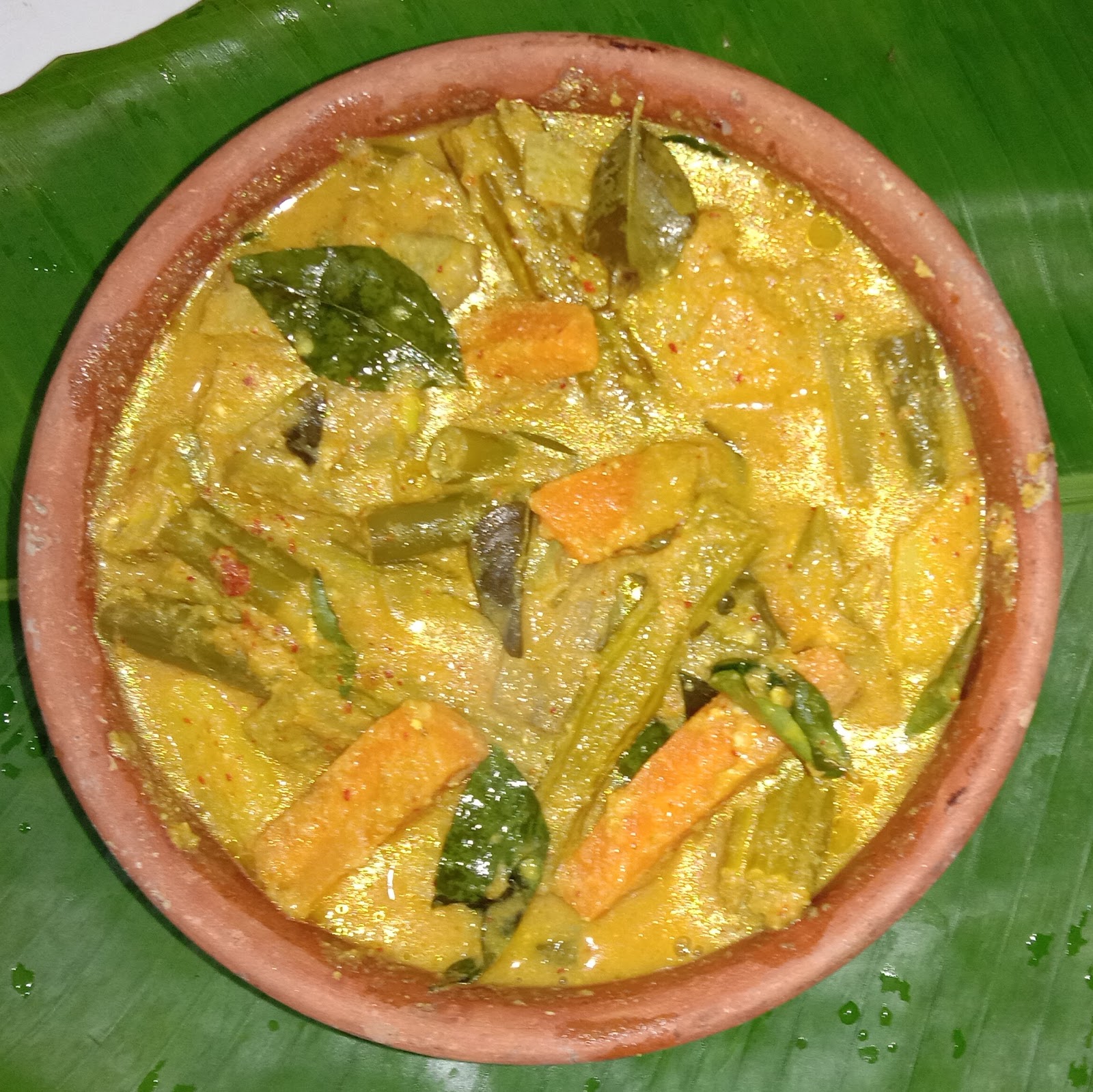Avial - Padmanabhaswamy Neivedyam
Mix-vegetable gravy
Avial is a creamy vegetable dish whose main ingredients are seasonal vegetables, coconut and curds seasoned with coconut oil and curry leaves. This dish is served as prasadam at the famous Padmanabhaswamy temple in Thiruvananthapuram in the Kerala state of Southern India.
Introduction
About this Recipe
Avial is a well known dish in Kerala vegetarian cuisine, which forms an essential part of the feasts of this state, especially during the harvest festival of Onam in their 26 item food spread, popularly known as Onam Sadhya.
Avial is a creamy vegetable dish whose main ingredients are seasonal vegetables, coconut and curds seasoned with coconut oil and curry leaves. The word “avial” is used to denote ‘boiled’ or ‘cooked in water’ — this sense being derived from the way the dish is made.
This dish is served as prasadam at the famous Padmanabhaswamy temple in Thiruvananthapuram in the Kerala state of Southern India. It has also been a favorite dish of the various rulers who ruled over the kingdoms of what has now formed into Kerala State.
Avial – Its Invention:
There are many interesting stories revolving around how this exotic dish was invented. But the most popular one is related to Prince Bhima of the Pandava brothers. According to Virata Parva, one of the 18 books of The Mahabharata, during the 13th year of their exile, the Pandavas lived in the kingdom of King Virata in disguise to avoid being detected by the Kauravas. To conceal their true identities each Pandava brother took on a disguise. Food loving Bhima took the disguise of a cook calling himself Ballava.
One day, after everyone had finished their meal, an unexpected guest arrived at the palace. It was Rishi Durvasa, who was known for his ill temper and the habit of cursing people, if he was not offered the best hospitality.
Bhima had to think quickly and cook a delicious meal for the rishi, but there wasn’t much food in the kitchen other than a handful of vegetables. With barely any time left on hand, Bhima quickly got down to preparing a dish using whatever ingredients were available and the resulting dish came to be known as avial! Luckily, Rishi Durvasa was immensely pleased with the meal and left the palace satisfied.
Another popular version of the story is associated with the King of Travancore. He once held a grand feast for his people, and everyone across the kingdom came to eat off the feast. Miscalculating the huge turnout, the kitchen started running out of food and the guests kept coming. When the King inspected the kitchen, he found that various parts of vegetables were wasted while chopping. He ordered his cook to collect those pieces and quickly make a curry to serve the people, and thus avial was born.
Popular Ingredients
There are other stories too. But, whatever the legends, avial is one of the most nourishing curries in India, which has the power to please one instantly with its simple flavours.
Generally, only crisp vegetables are used in avial. Vegetables commonly used in avial are elephant yam, plantain, ash pumpkin, carrots, beans, egg plants, cucumber, drumstick pods, snake gourd and Broad Bean, etc. are the recent introduction, while the north Kerala Avial includes bitter gourd also and in the Kollam region of Kerala tomato is added among other vegetables. Some people prefer to skip curd or substitute it with raw mango or tamarind pulp. This dish can be made into a gravy or be made into a semi-solid side dish. It is generally eaten with rice.
The ingredients and procedures explained here are taken from Bhaga Shastra directly, along with nutritional values and additional tips.
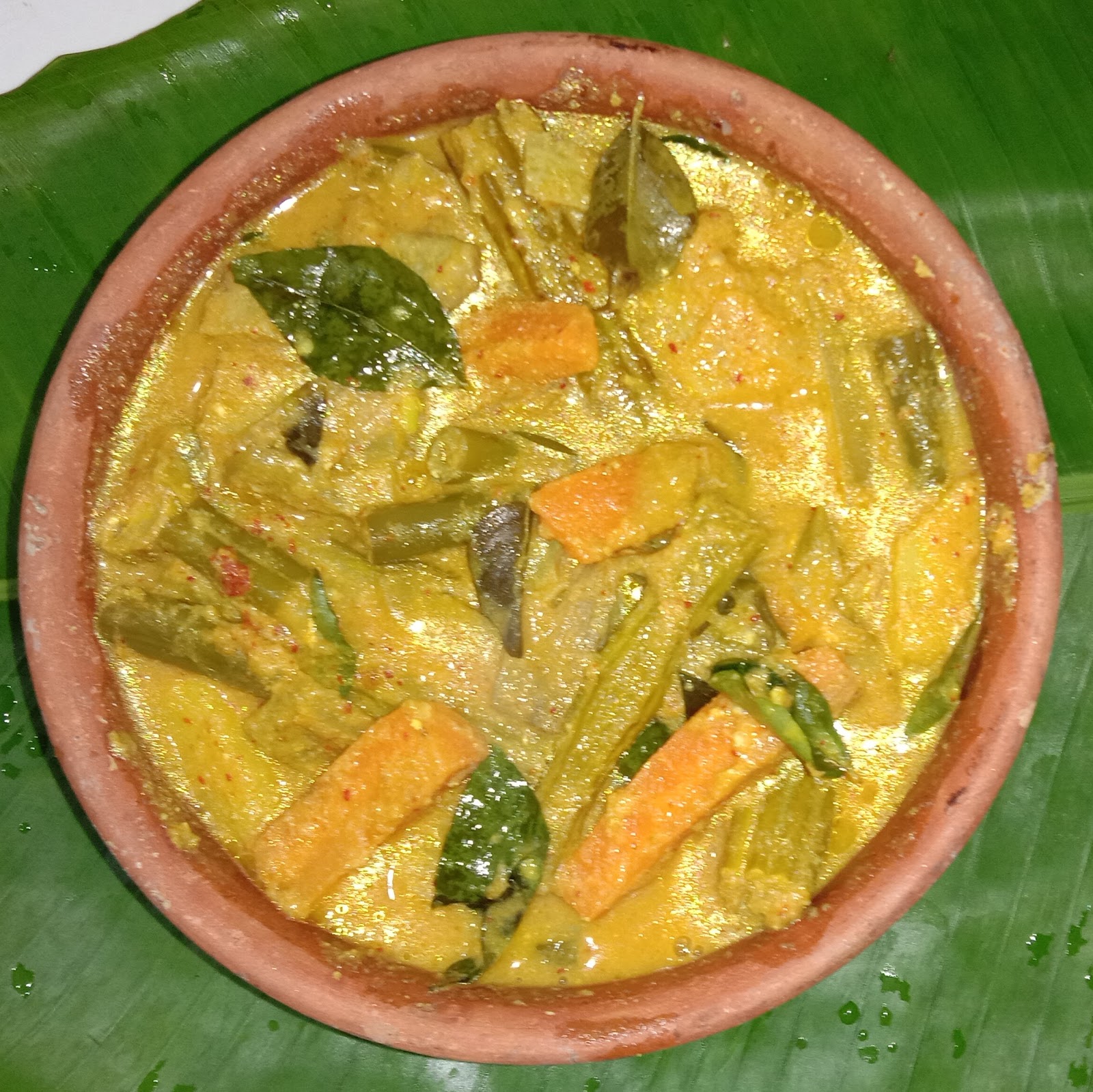
- Preparation time: 30 minutes (incl. getting all ingredients ready, cleaning, cutting, de-seeding vegetables)
- Cooking time: 30 minutes
- Total time: 60 minute
- Servings: 8 servings
- Course: Side dish, esp. In festival spreads such as Onam Sadhya
- Cuisine: Kerala cuisine
Ingredients
-
Water 1600 ml
-
Sour curd 400 ml
-
Mixed vegetables, incl. carrot, pumpkin, snake gourd, brinjal, drumstick, cucumber, beans, raw banana and potato. 700 gms
-
Powdered salt 52.5 gms
-
Turmeric powder 4 gm
-
Red chilli 52.5 gm
-
Tamarind 70 gm
-
Cumin seeds 8 gm
-
Coconut oil 35 ml
-
Curry leaves a handful
-
One medium sized coconut grated
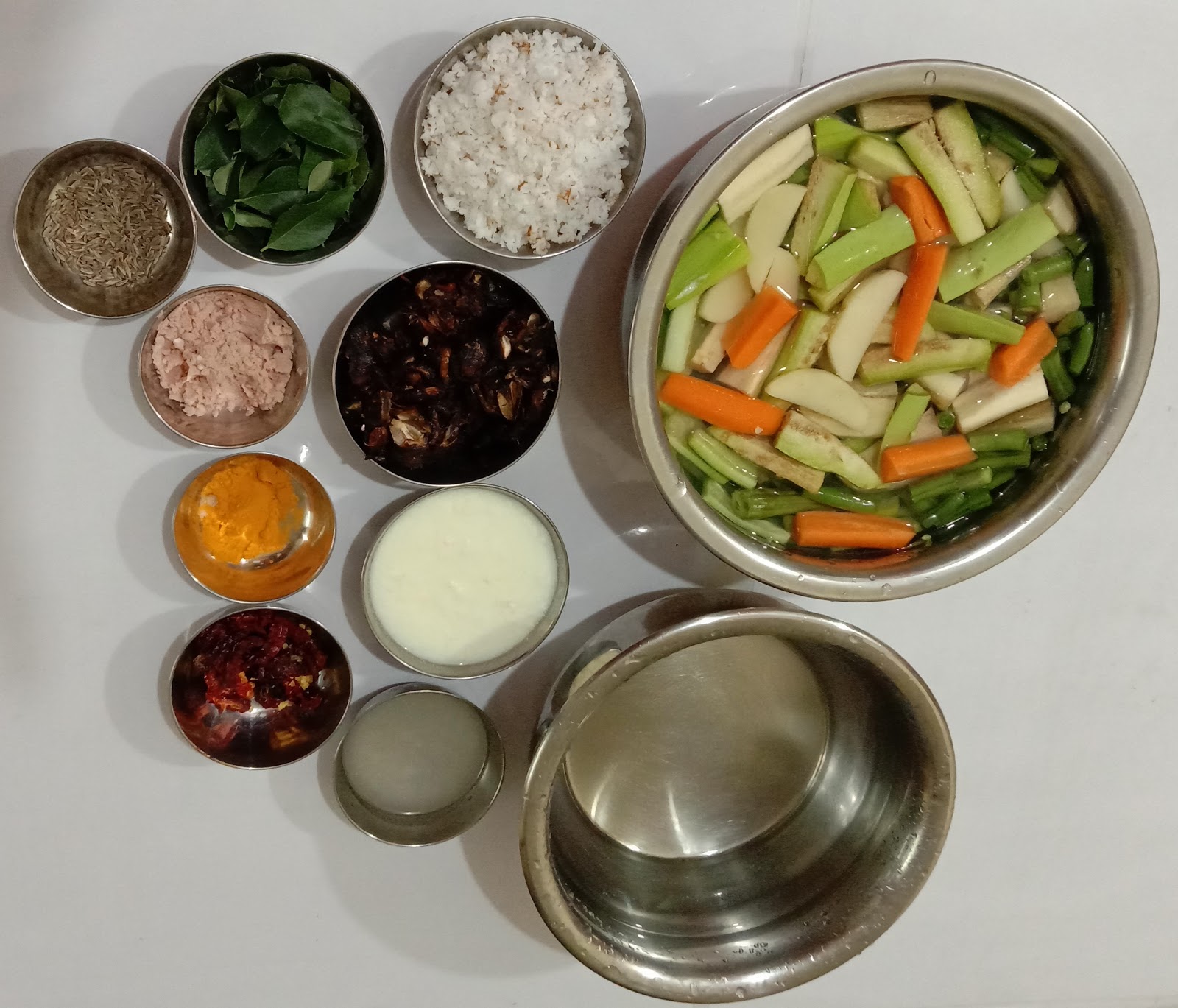
Here we are presenting the original recipe as given in Bhaga Shastra along with the ingredient measurements also as given in the shastra. Bhaga Shastra gives ingredient measurements in measurement systems used in ancient times. Hence please use the conversion guidelines below to convert it into modern measurement systems. When giving this recipe, we are not rounding any measurements in the modern units, so as to avoid any deviations from the Bhaga Shastra.
Bhaga Shastra Units Conversion
1 Padi – 1500 gms or 1.5 kgs approx.
1 Palam – 35 gms approx.
1 R.e (Rupee Equivalent) – 4.8 gms approx.
Cooking Method
- Wash the vegetables, skin and deseed them and cut them into medium size pieces.
- After washing and cutting the vegetables, place them in a cooking mud vessel.
- In a small plate take the red chilli, salt and turmeric powder.
- Grind them into a fine powder.
- Add this ground powder to the vegetables.
- Now, add enough water into the mud vessel containing the vegetables in such a way, they become immersed in the water.
- Mix the vegetables with the powder and place it on a lit stove.
- Allow the vegetable to cook till the consistency thickens. Close the lid.
- In another bowl, take water and soak the tamarind for a few minutes.
- Next, extract the tamarind juice. In another bowl take a filter and squeeze the tamarind as much you can and extract the juice out of it.
- Open the lid of the mud vessel to see if the vegetables have cooked and the water reduced
- Next, add tamarind extract to the vegetables and mix well.
- After adding the tamarind, close the lid and allow the vegetables to cook.
- After a few minutes check if the mixture in the vessel has thickened.
- Meanwhile, take another bowl – add coconut, red chilli and cumin seeds into it.
- Grind them into a fine paste. To this paste add the sour curd and mix well.
- Now add this paste to the cooked vegetables and mix well. Allow it to boil.
- Next, add a bunch of curry leaves and stir well.
- Add Coconut oil and mix this too with the cooked vegetables.
- Healthy, tasty, Keralite special avial is ready. Serve it in a bowl and offer it as naivedya to Swamiji.
Step by step instructions
1
Wash the vegetables, skin and deseed them and cut them into medium size pieces.
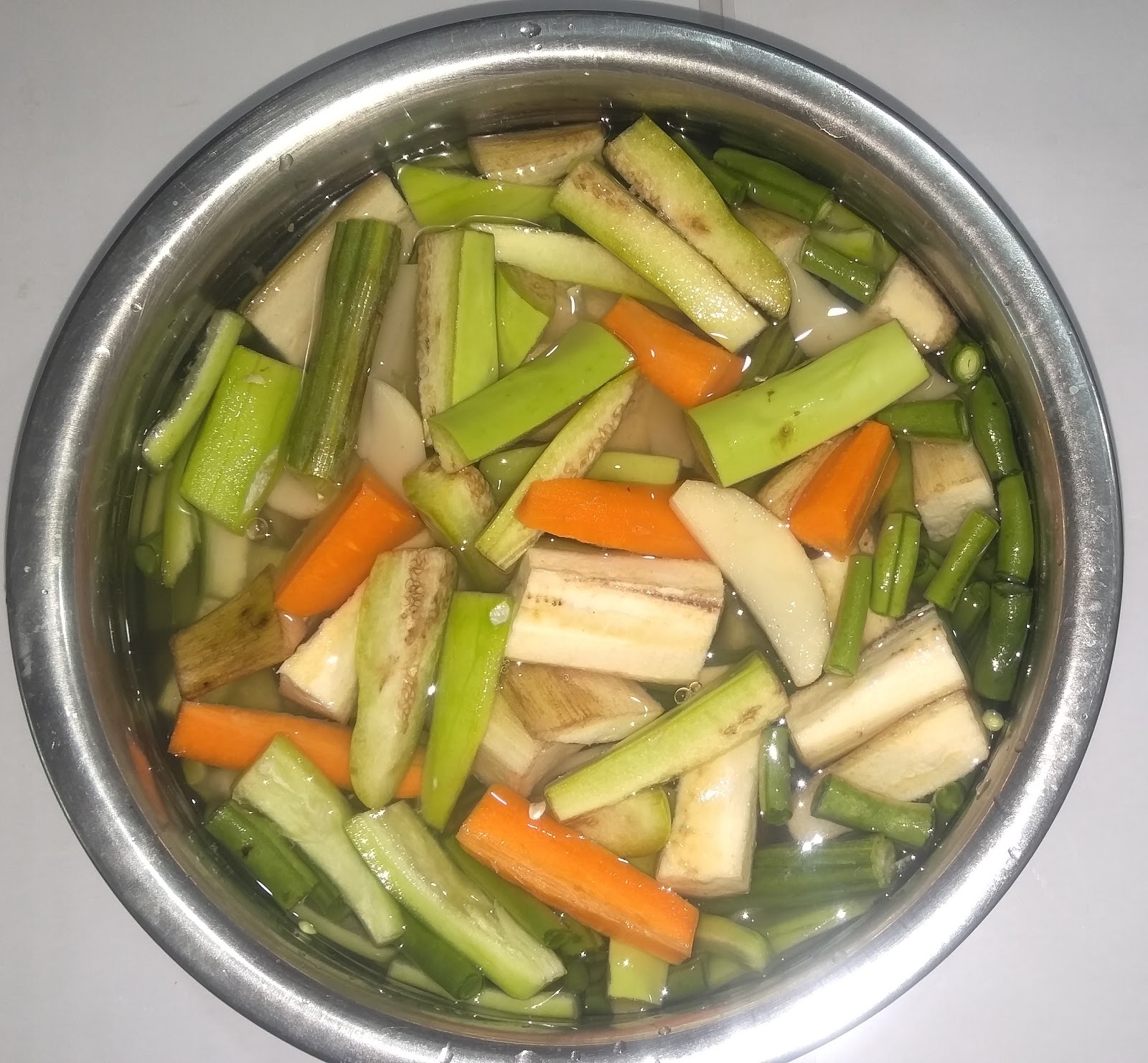
2
In a small plate take the red chilli, salt and turmeric powder.
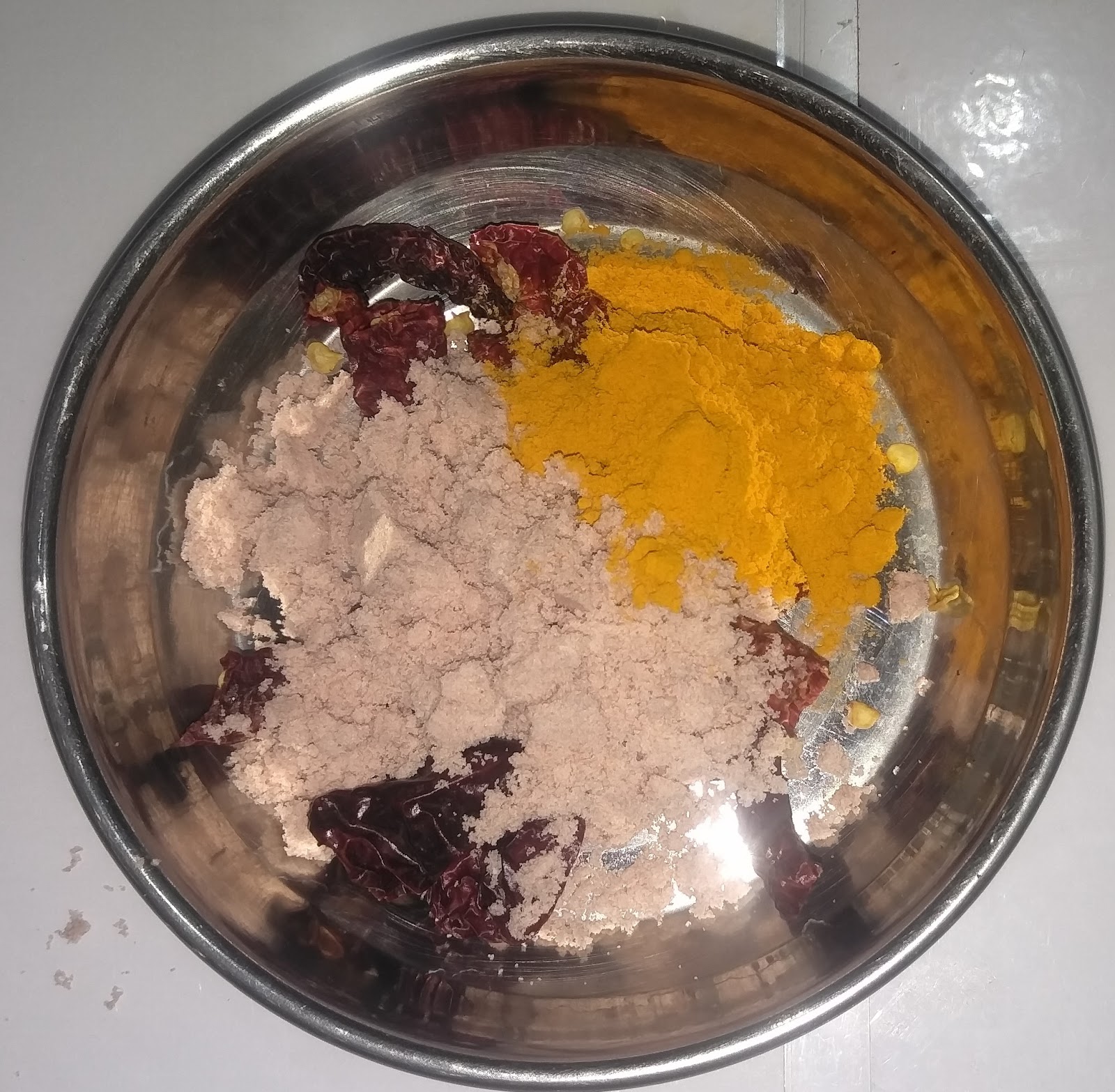
3
Grind them into a fine powder.

4
Place the washed and cut vegetables in a cooking mud vessel. Add this ground powder to the vegetables.
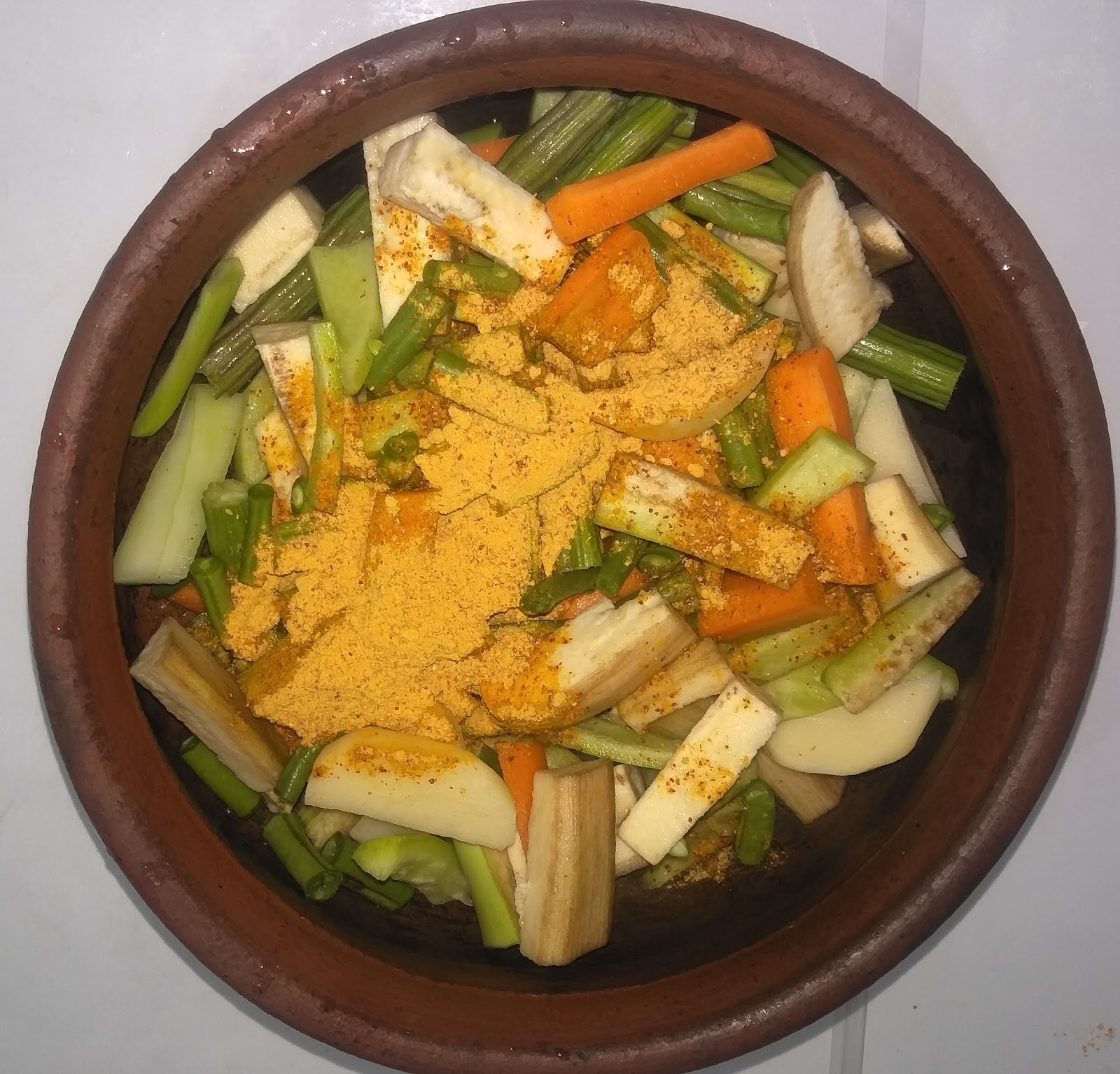
5
Now, add enough water into the mud vessel containing the vegetables in such a way, they become immersed in the water.
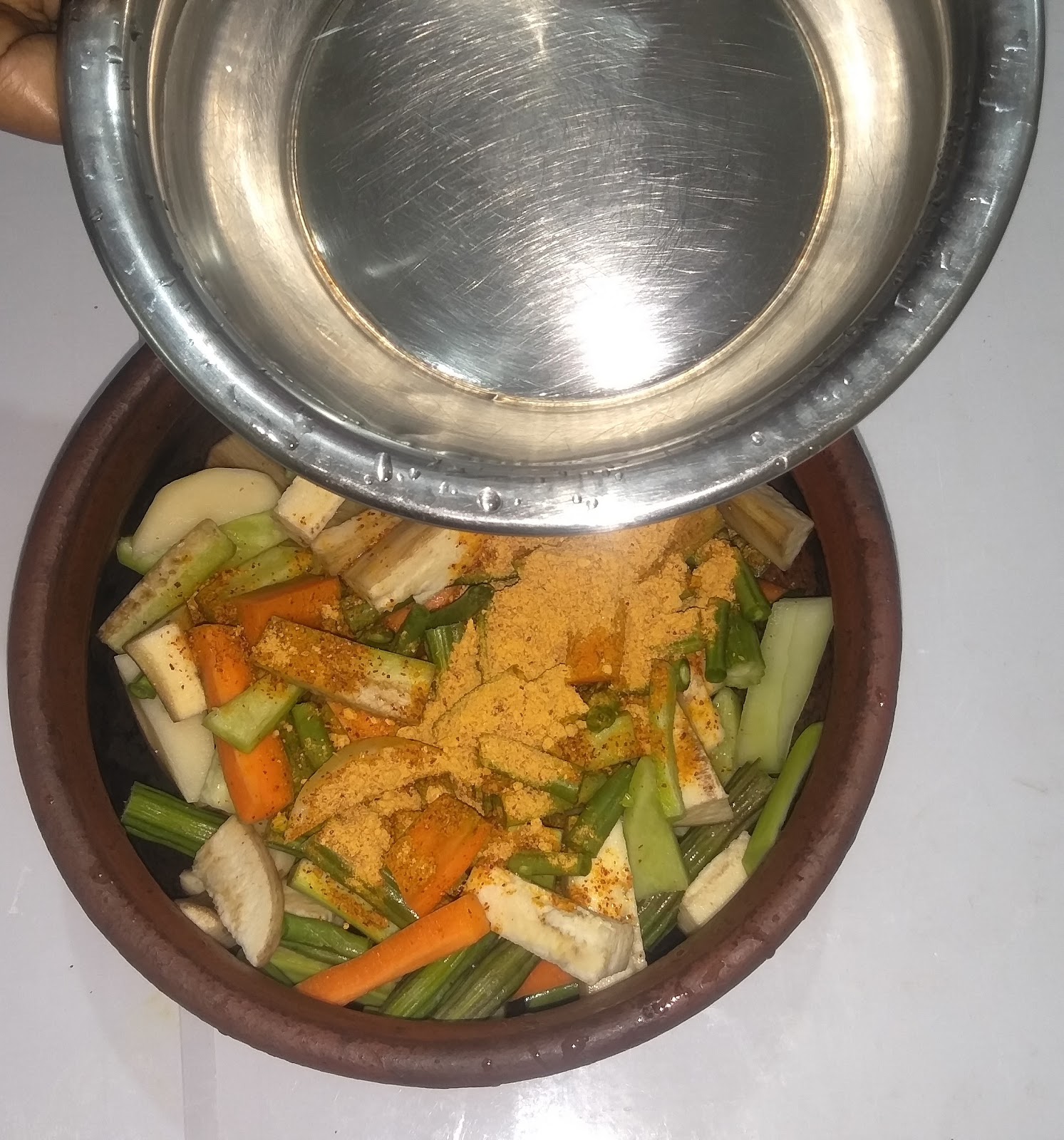
6
Mix the vegetables with the powder and place it on a lit stove.
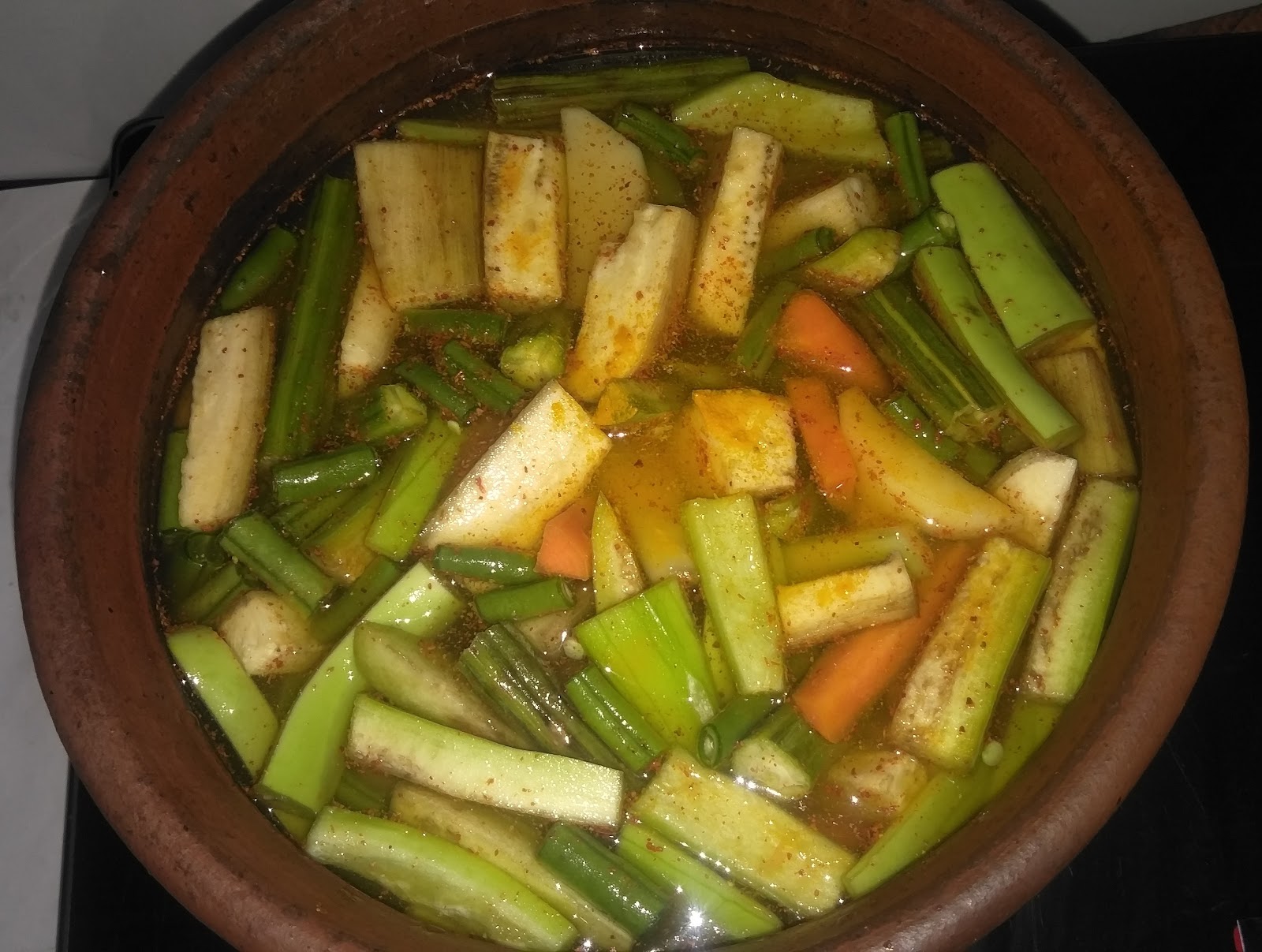
7
Allow the vegetable to cook till the consistency thickens. Close the lid.
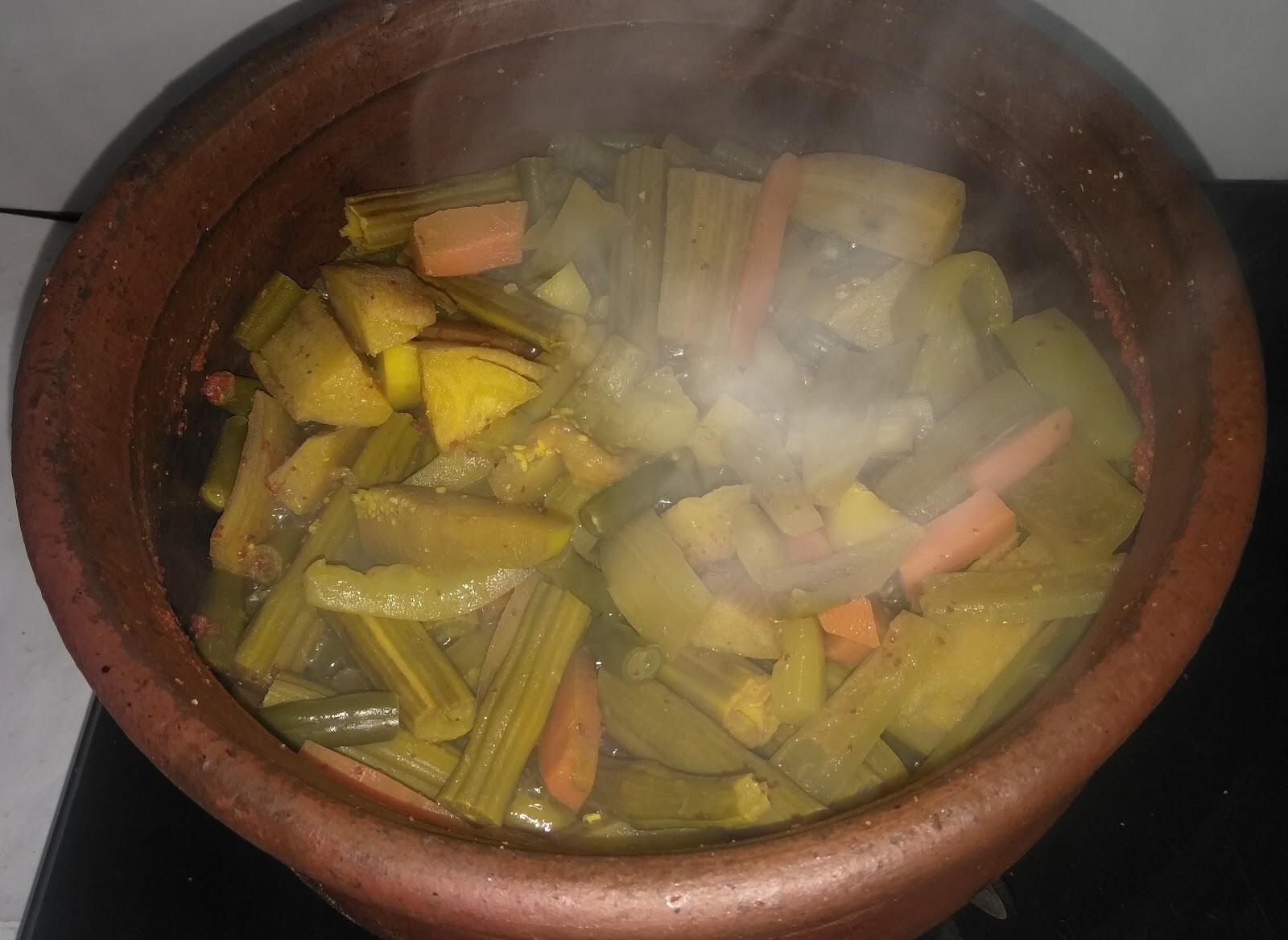
8
In another bowl, take water and soak the tamarind for a few minutes.

9
Next, extract the tamarind juice. In another bowl take a filter and squeeze the tamarind as much you can and extract the juice out of it.
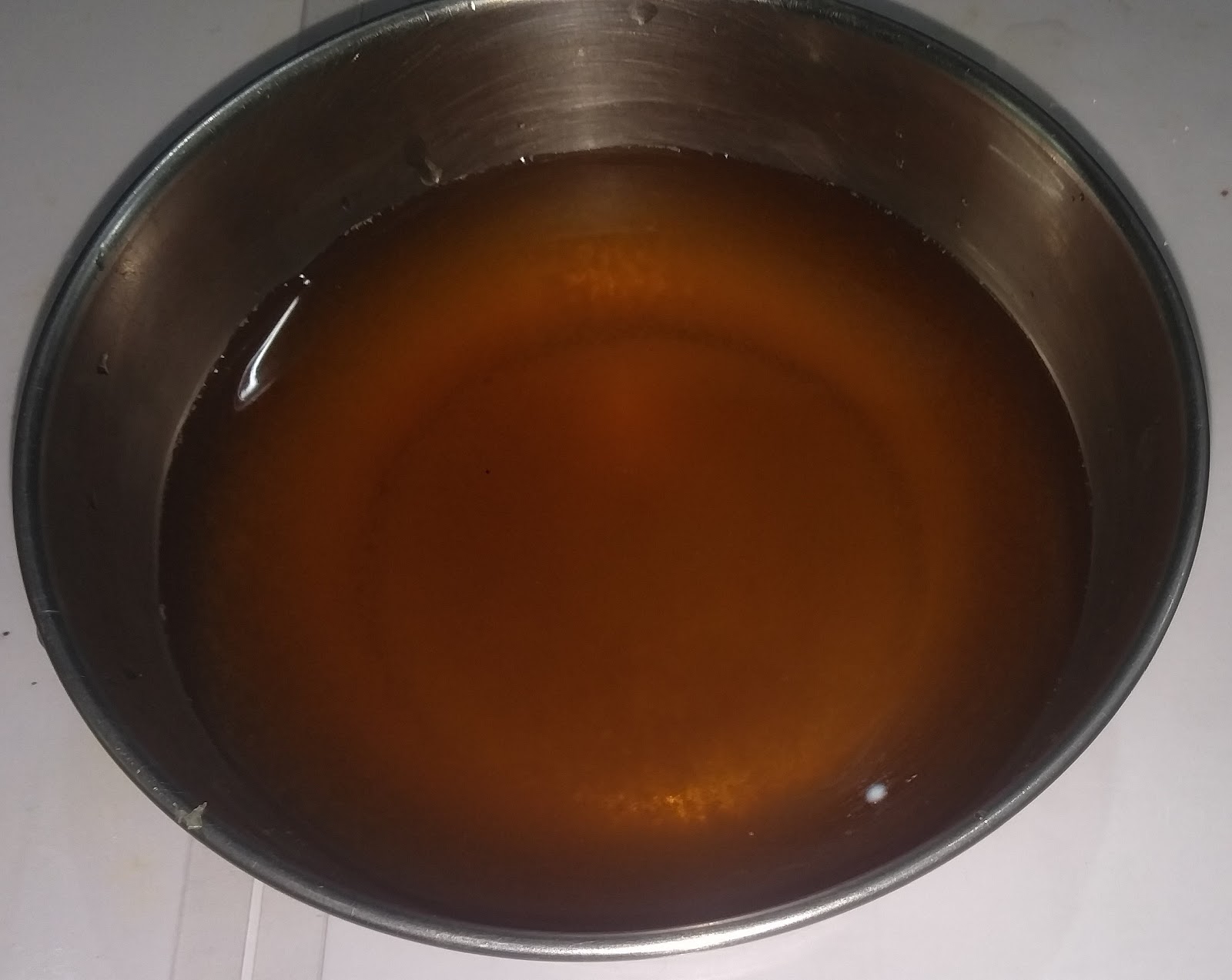
10
Open the lid of the mud vessel to see if the vegetables have cooked and the water reduced. Add tamarind extract to the vegetables and mix well.
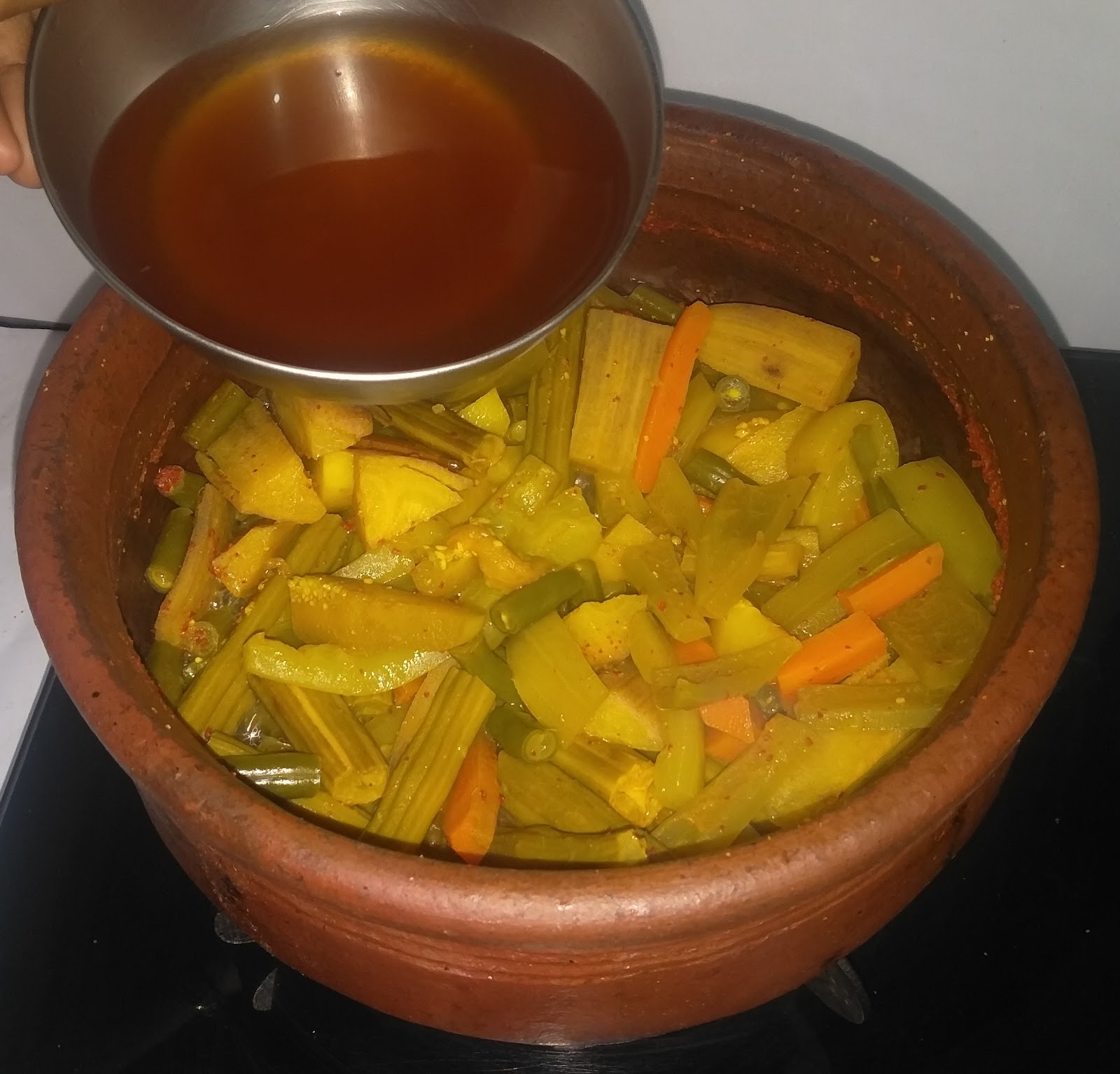
11
After adding the tamarind, close the lid and allow the vegetables to cook. After a few minutes check if the mixture in the vessel has thickened.

12
Meanwhile, take another bowl – add coconut, red chilli and cumin seeds into it.
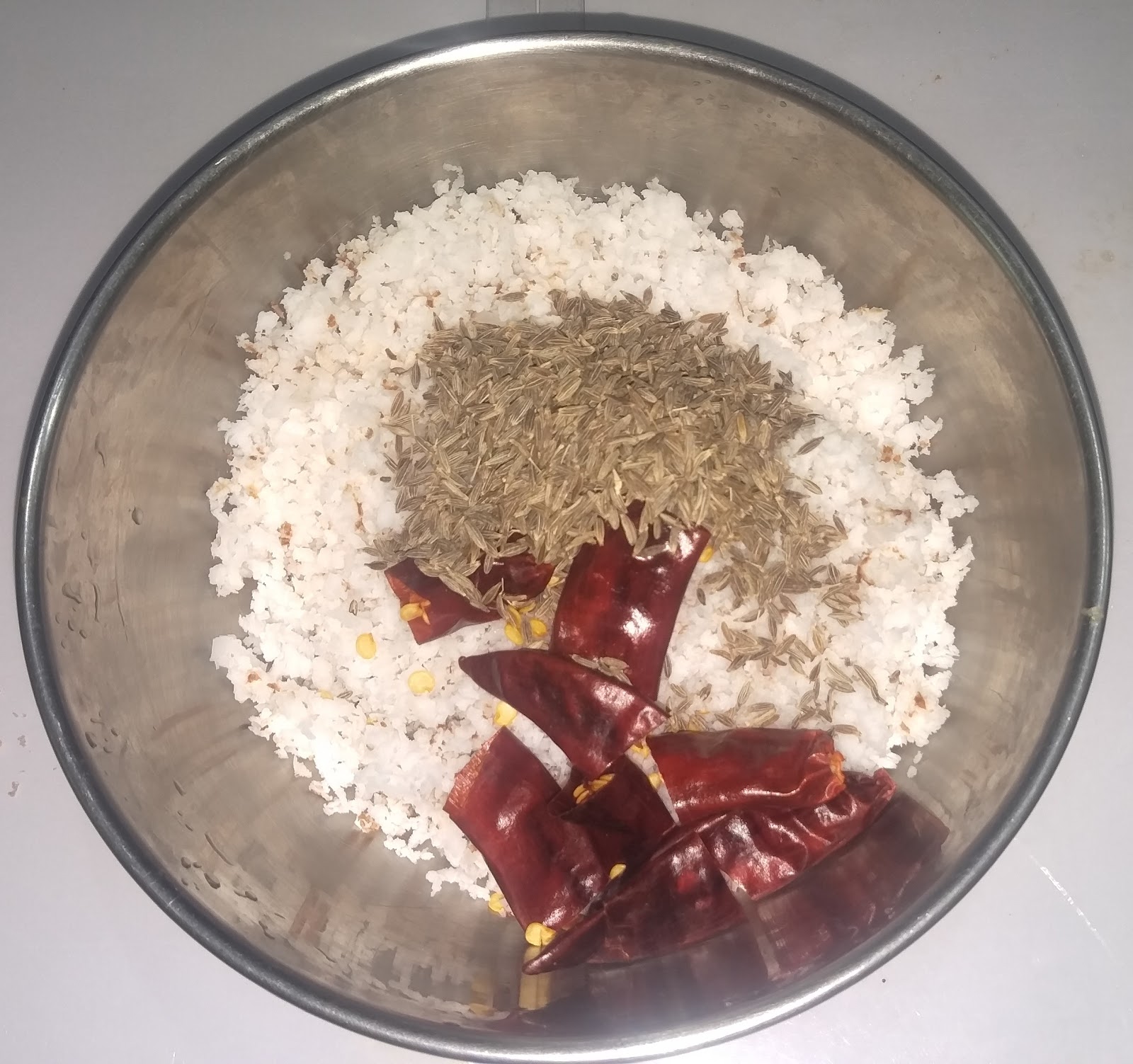
13
Put the coconut, red chilli and cumin seeds in a grinder. To this paste add the sour curd and mix well.

14
Grind them into a fine paste.
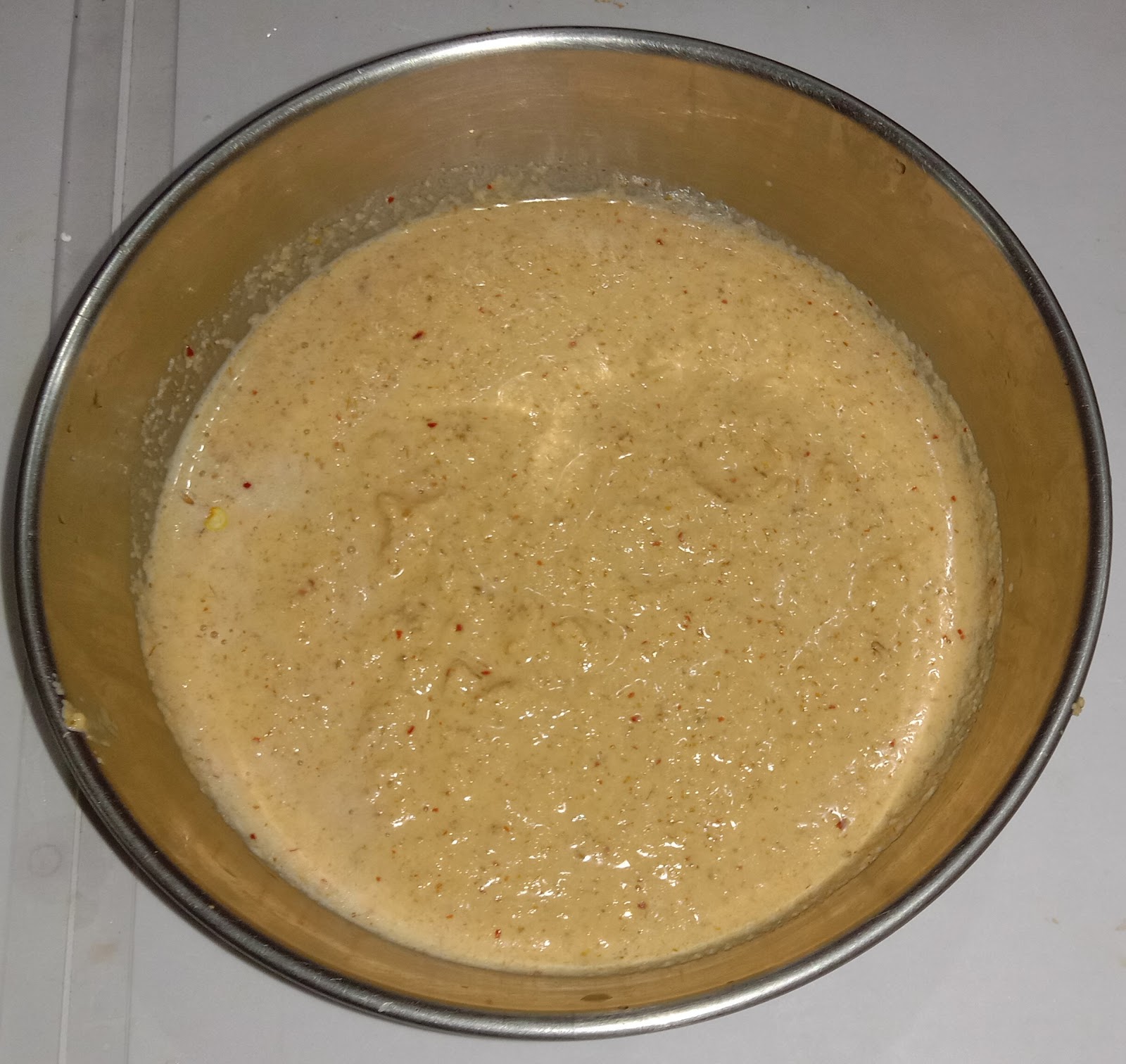
15
To this paste add the sour curd and mix well.
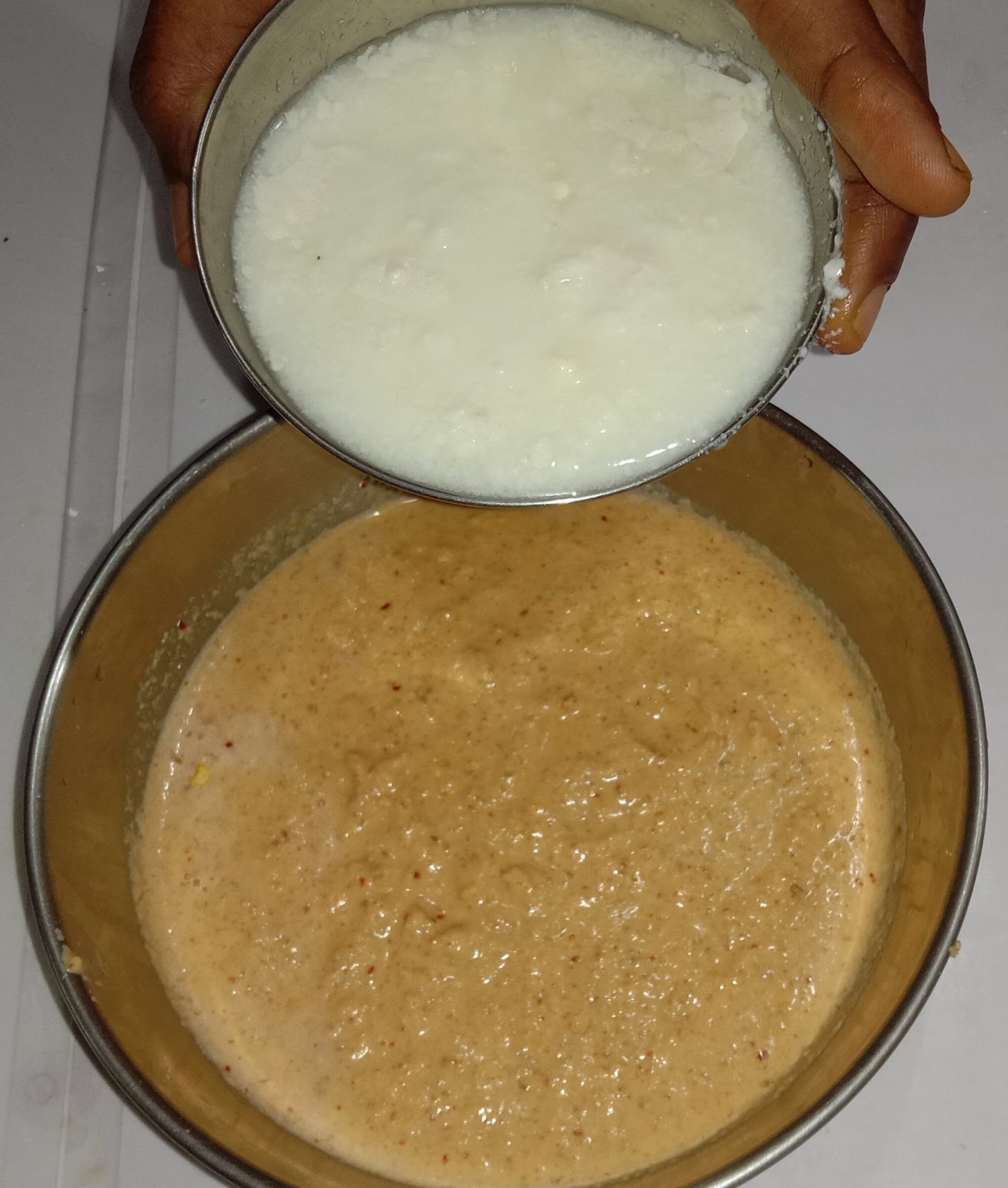
16
Now add this paste to the cooked vegetables and mix well. Allow it to boil.
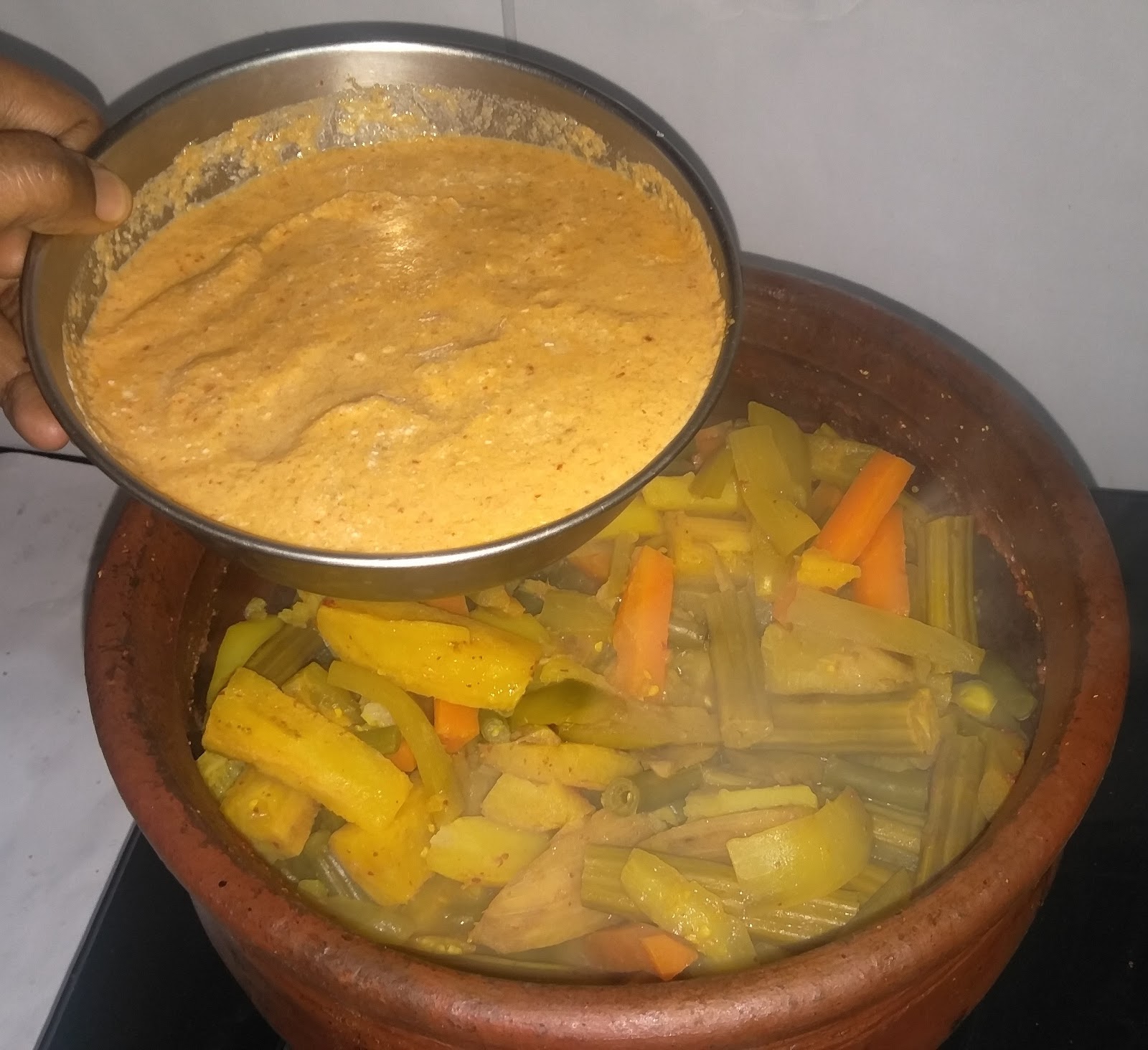
17
Next, add a bunch of curry leaves and stir well.

18
Add Coconut oil and mix this too with the cooked vegetables.
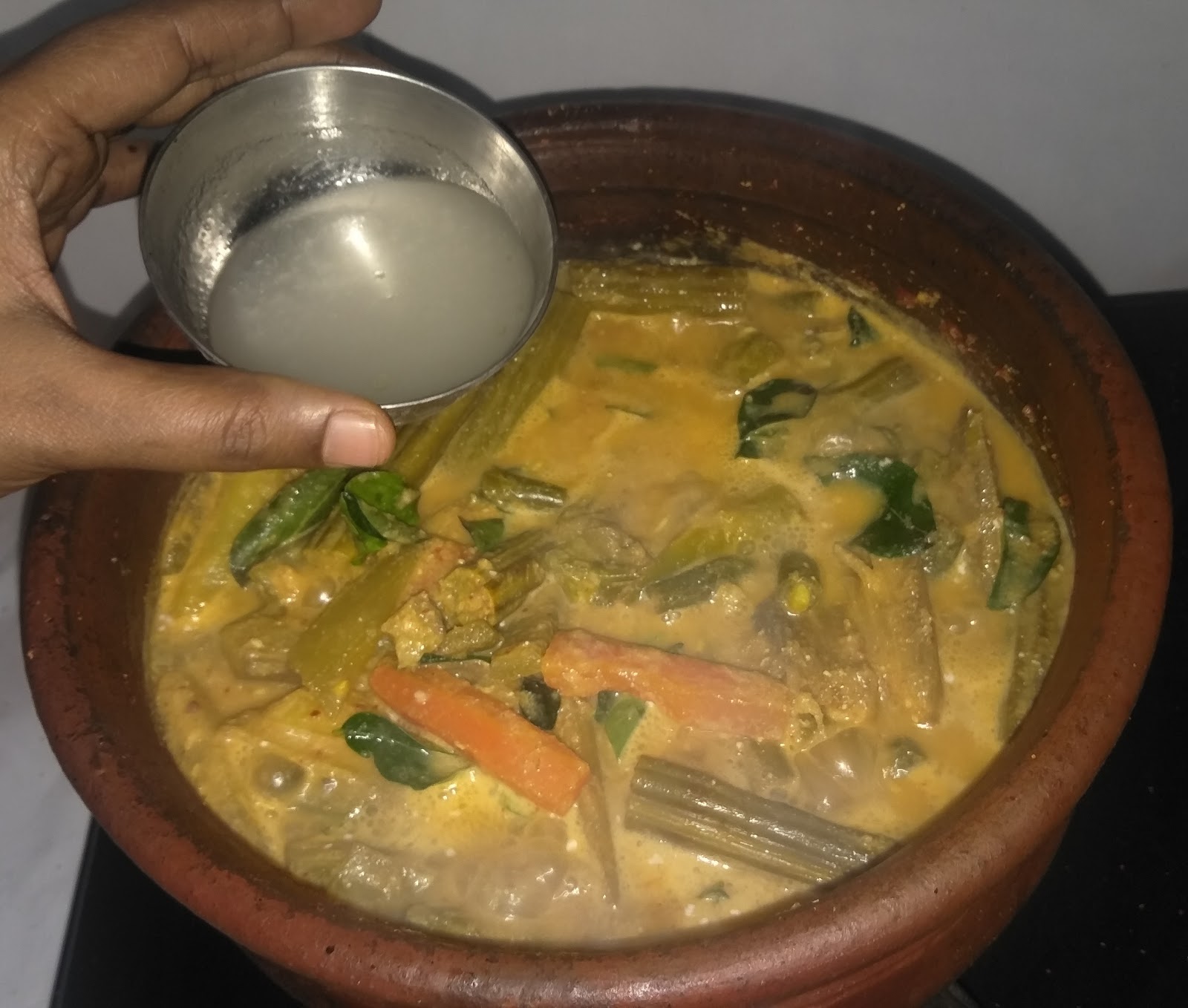
19
Healthy, tasty, Keralite special avial is ready.
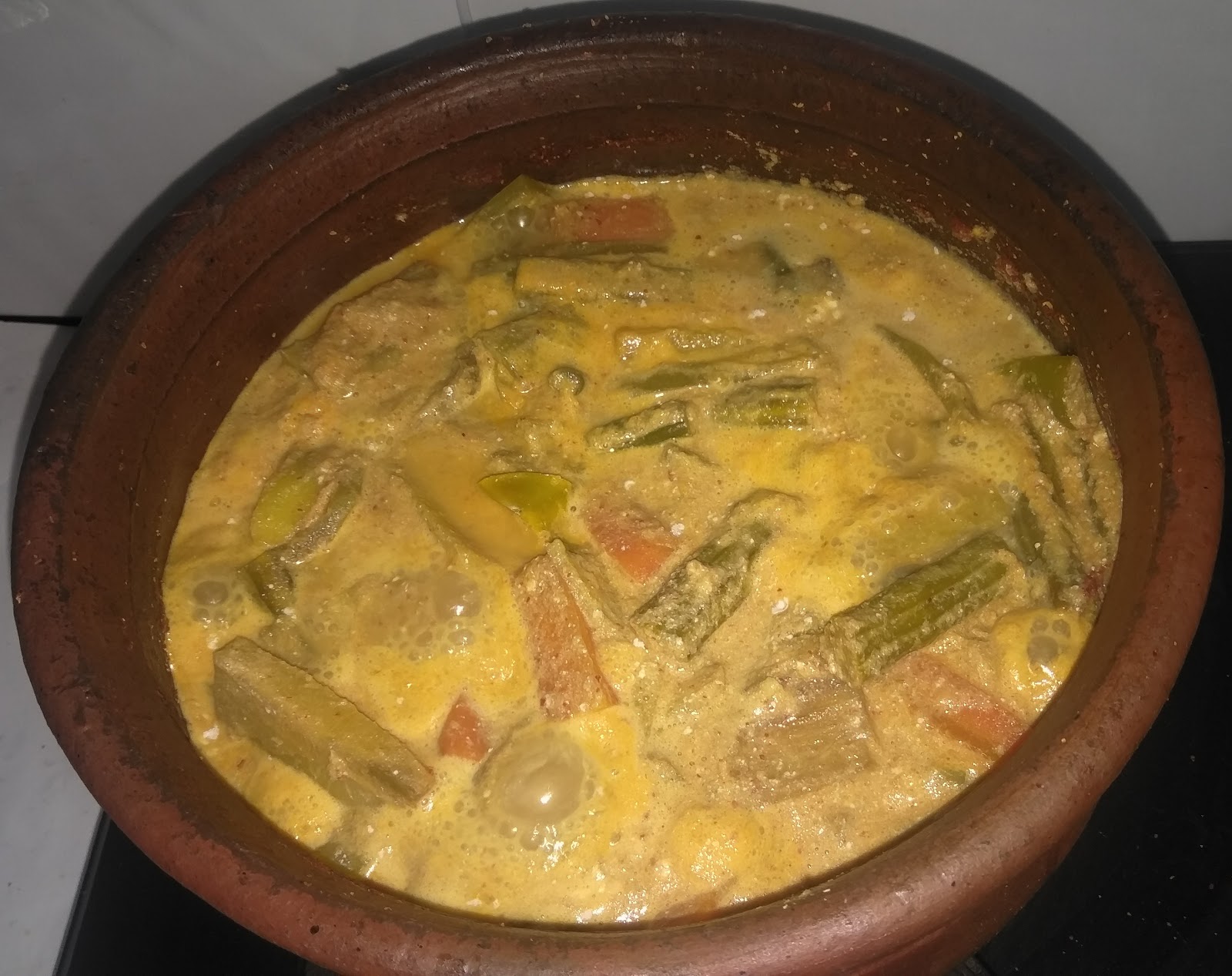
20
Serve it in a bowl and offer it as naivedya to Swamiji.
